Lecture 07 Functional Dependency
First Normal Form:
Domain is atomic if its elements are considered to be indivisible units
A relational schema R is in first normal form if the domains of all attributes of R are atomic
Design Goals:
Avoid redundant data
Ensure that relationships among attributes are represented
Facilitate the checking of updates for violation database integrity constraints.
Higher Normal forms — Devise a Theory for the Following:
Decide whether a particular relation R is in “good” form.
In the case that a relation R is not in “good” form, decompose it into a
set of relations {R1, R2, ..., Rn} such that
each relation is in good form
the decomposition is a lossless-join decomposition
Our theory is based on:
functional dependencies
multivalued dependencies [skipping]
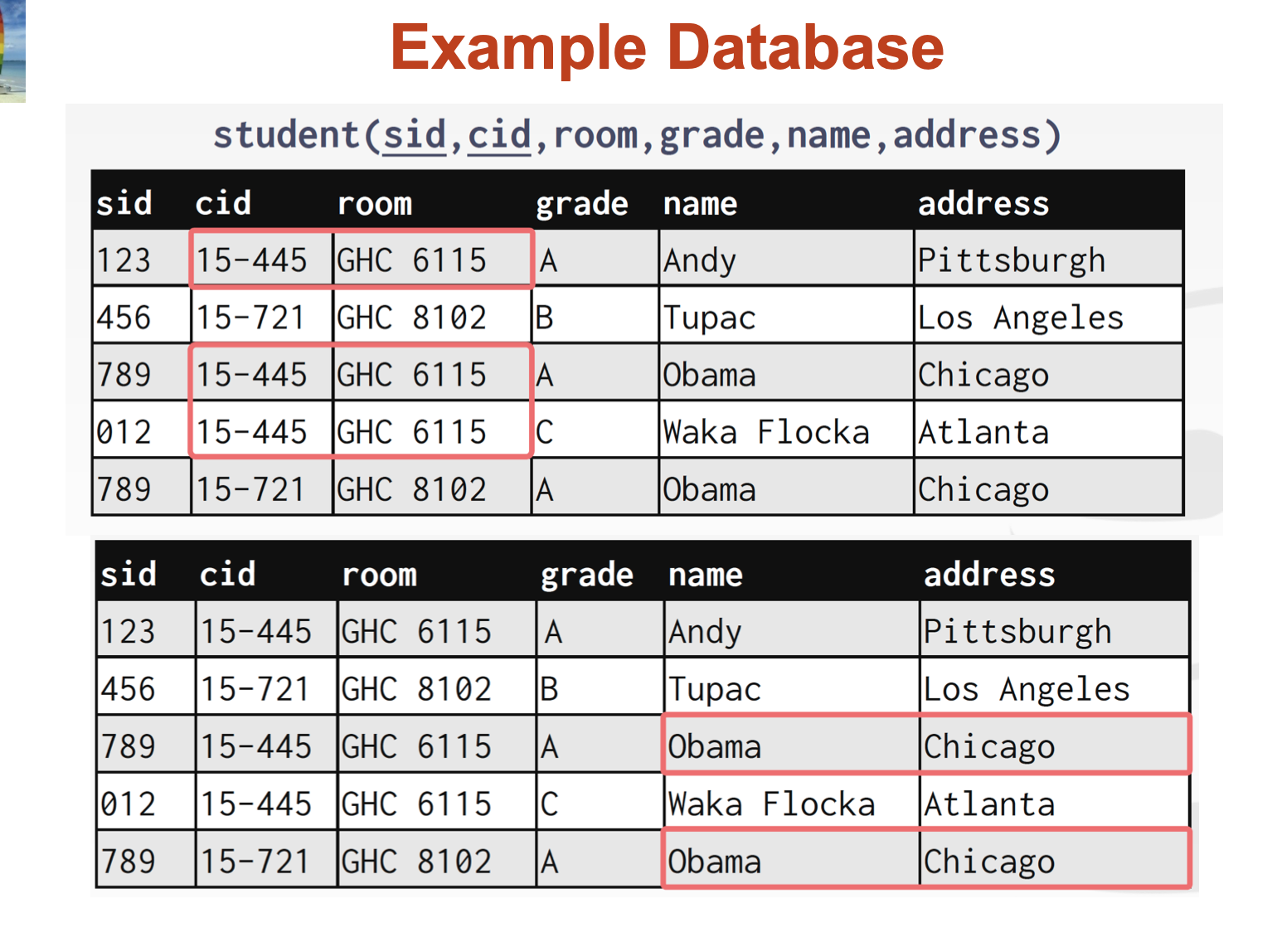
Update Anomalies:
Redundancy Problems
If the room number changes, we need to make sure that we change all students records
Insert Anomalies
May not be possible to add a student unless they’re enrolled in a course
Delete Anomalies
If all the students enrolled in a course are deleted, then we lose the room number
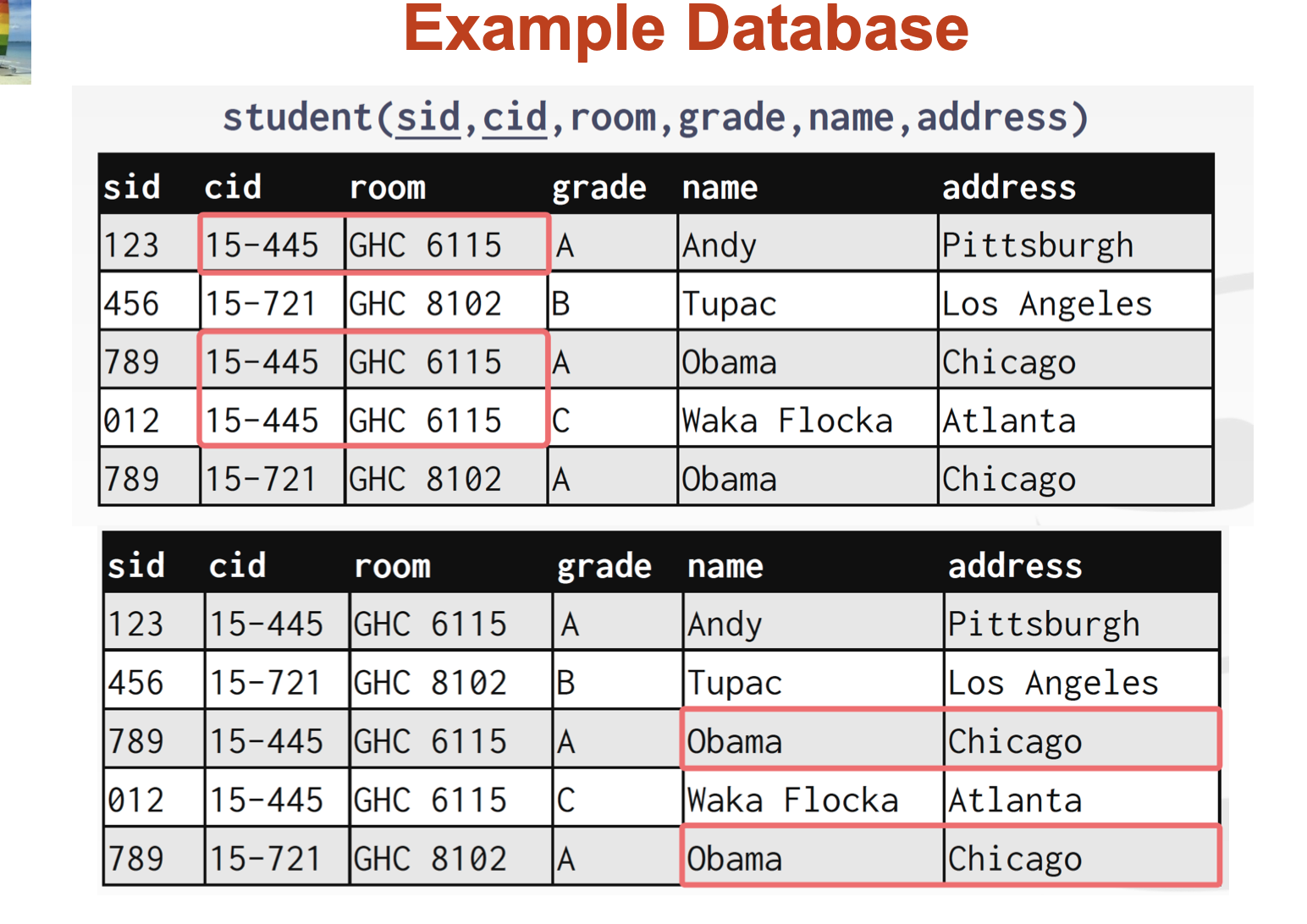
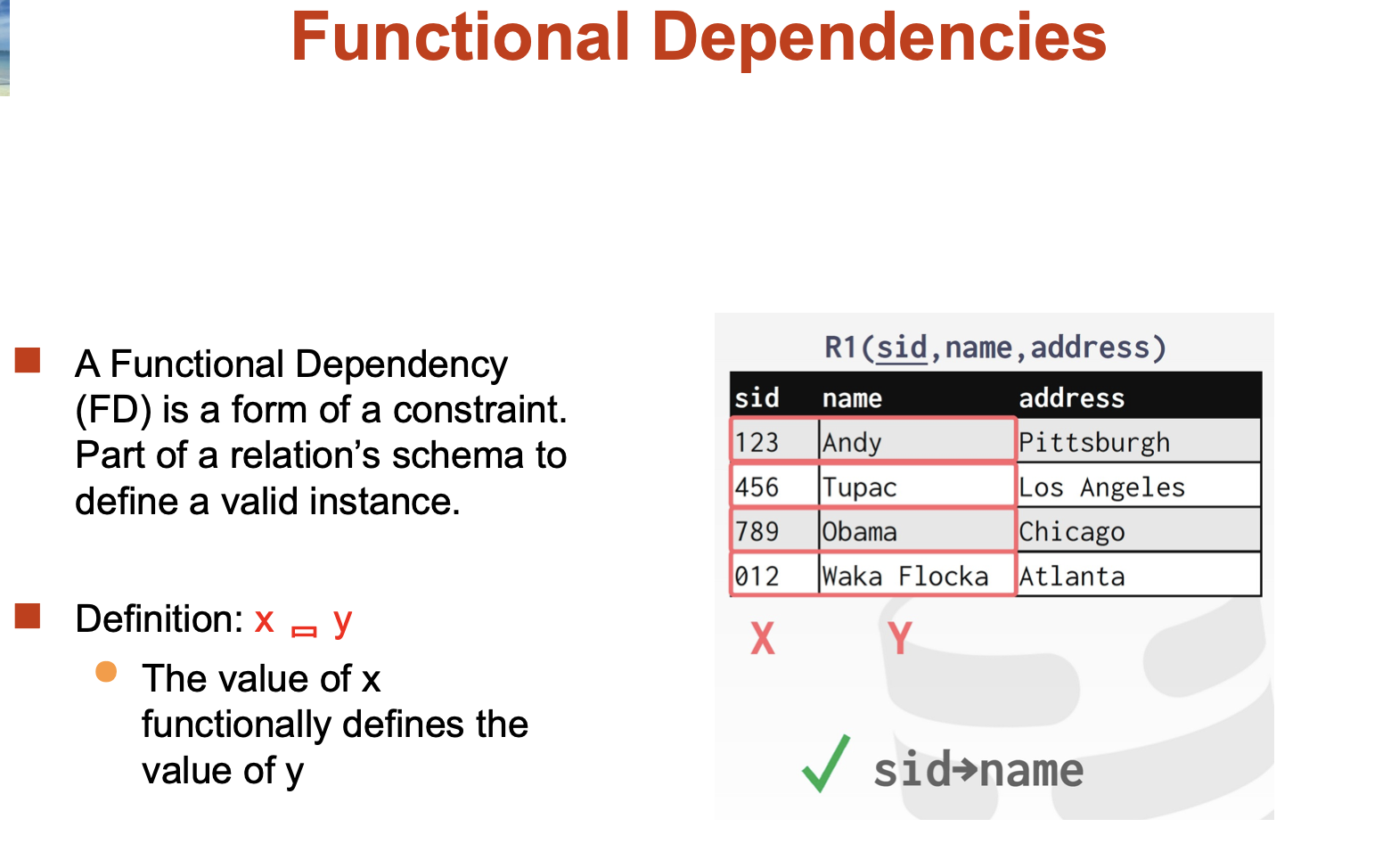
Functional Dependencies:
A Functional Dependency (FD) is a form of a constraint. Part of a relation’s schema to define a valid instance.
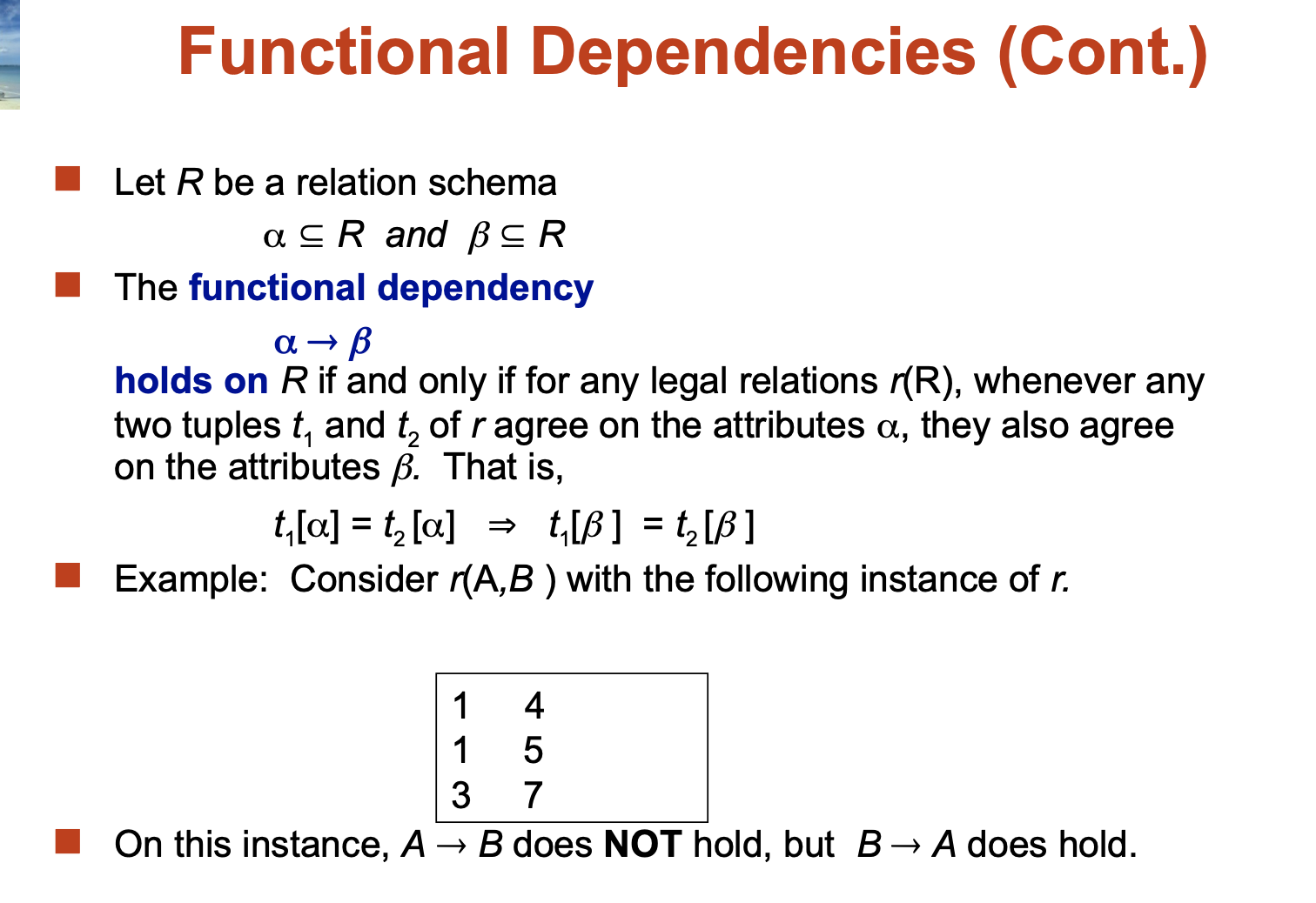
Use of Functional Dependencies:
We use functional dependencies to:
1.test relations to see if they are legal under a given set of functional dependencies.
If a relation r is legal under a set F of functional dependencies, we say that r satisfies F.
2.specify constraints on the set of legal relations
We say that F holds on R if all legal relations on R satisfy the set of functional dependencies F.
Closure of a Set of Functional Dependencies:
Given a set F set of functional dependencies, there are certain other functional dependencies that are logically implied by F.
For e.g.: If AB and BC, then we can infer that AC
The set of all func. dependencies logically implied by F is the closure of F.
We denote the closure of F by F+.
We can find F+, the closure of F, by repeatedly applying Armstrong’s Axioms:

Example:
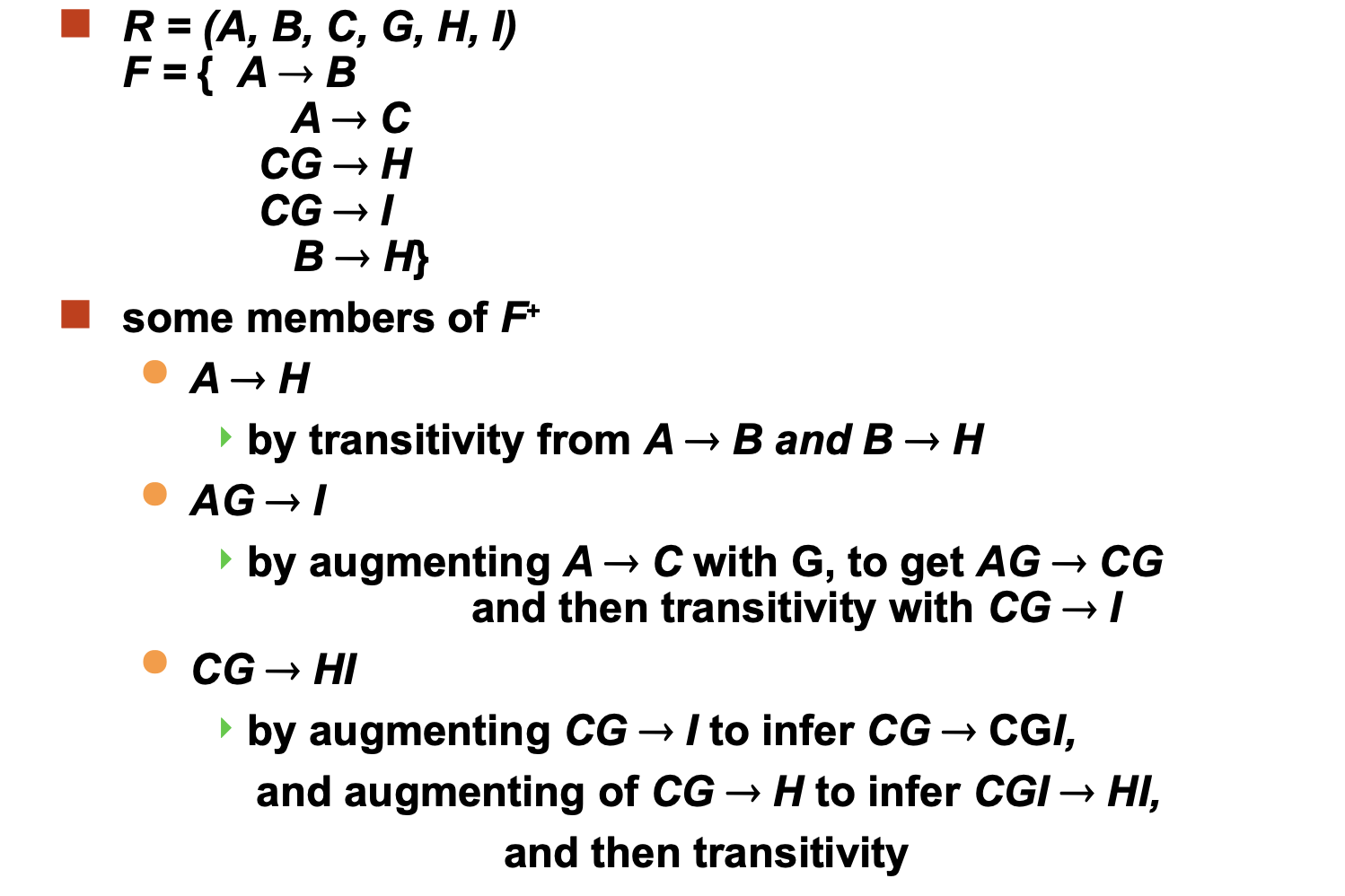
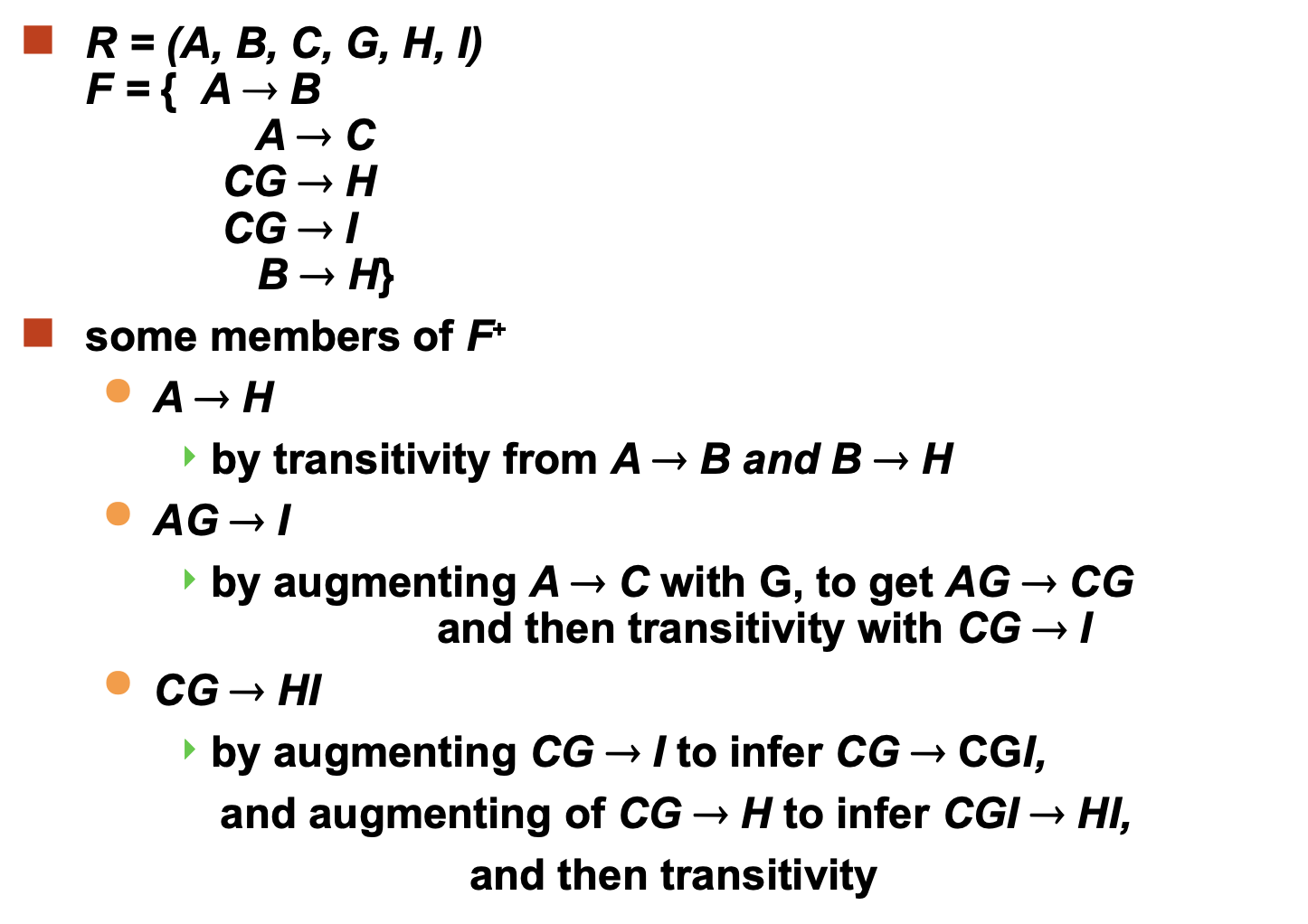
We want a minimal set of FDs that was enough to ensure correctness.
Maintaining the closure at runtime is expensive.
It allows us to find the super key for a relation.
Recall of Relational Model:
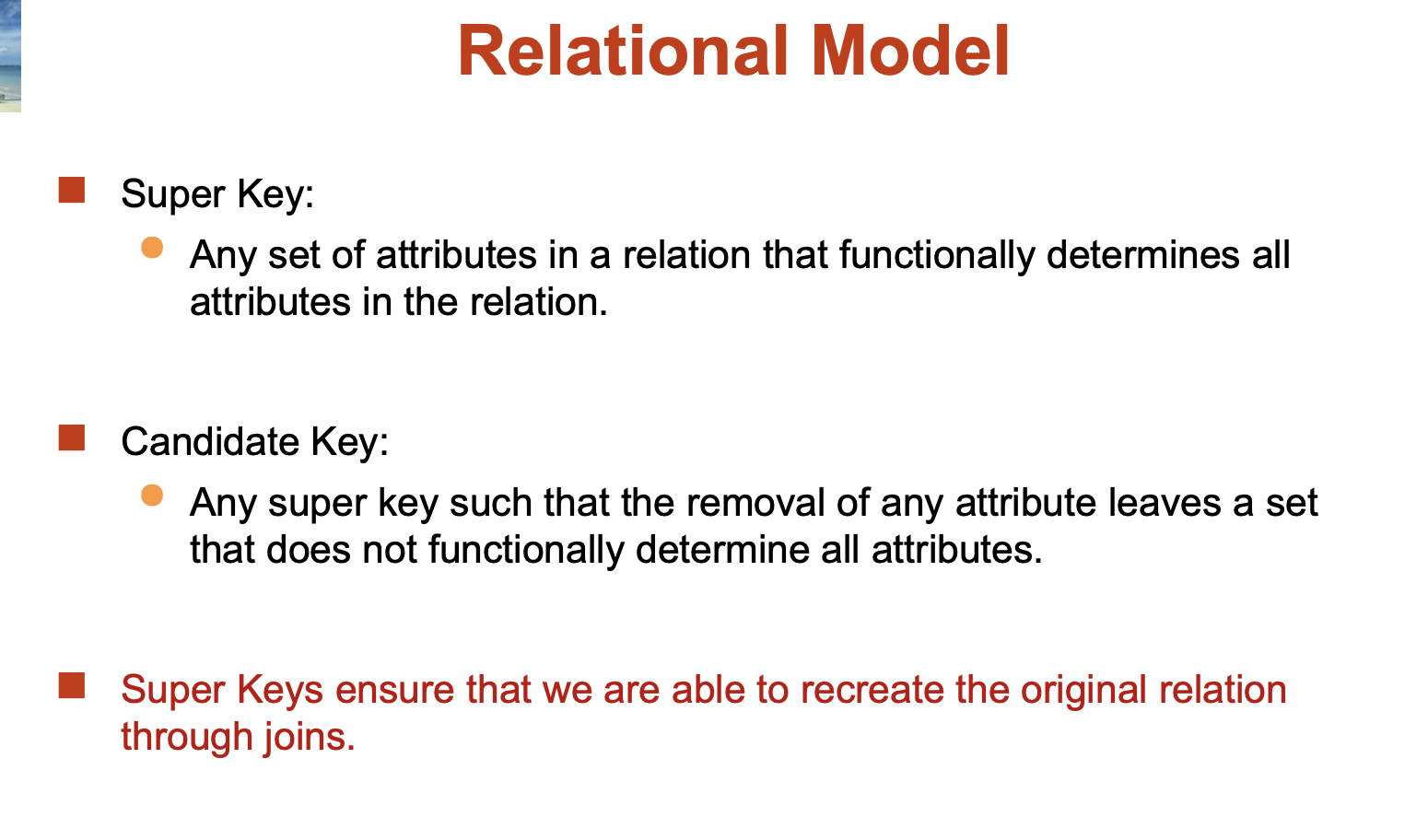
Decomposition Goals:
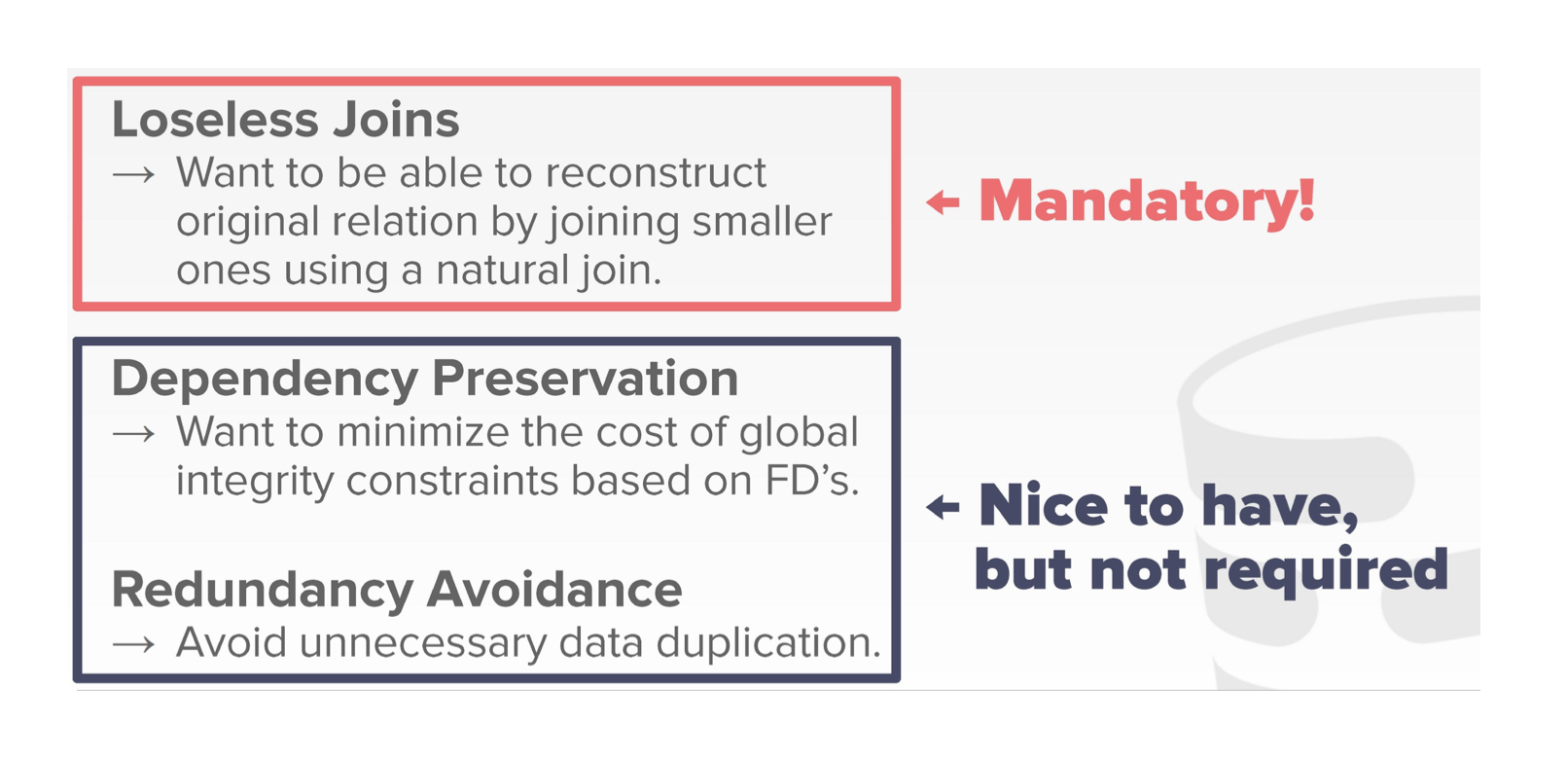
Lossless Decomposition:
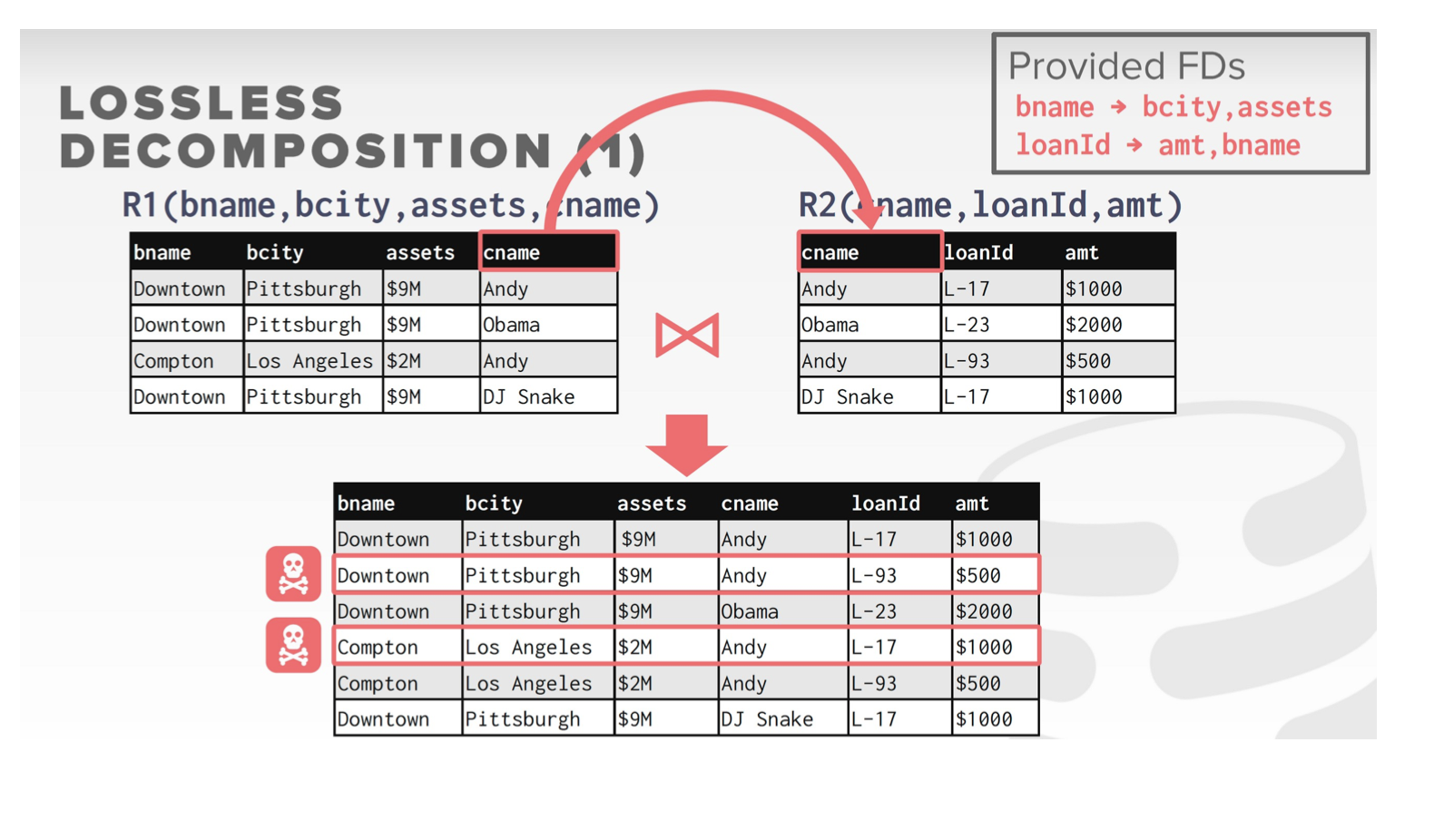
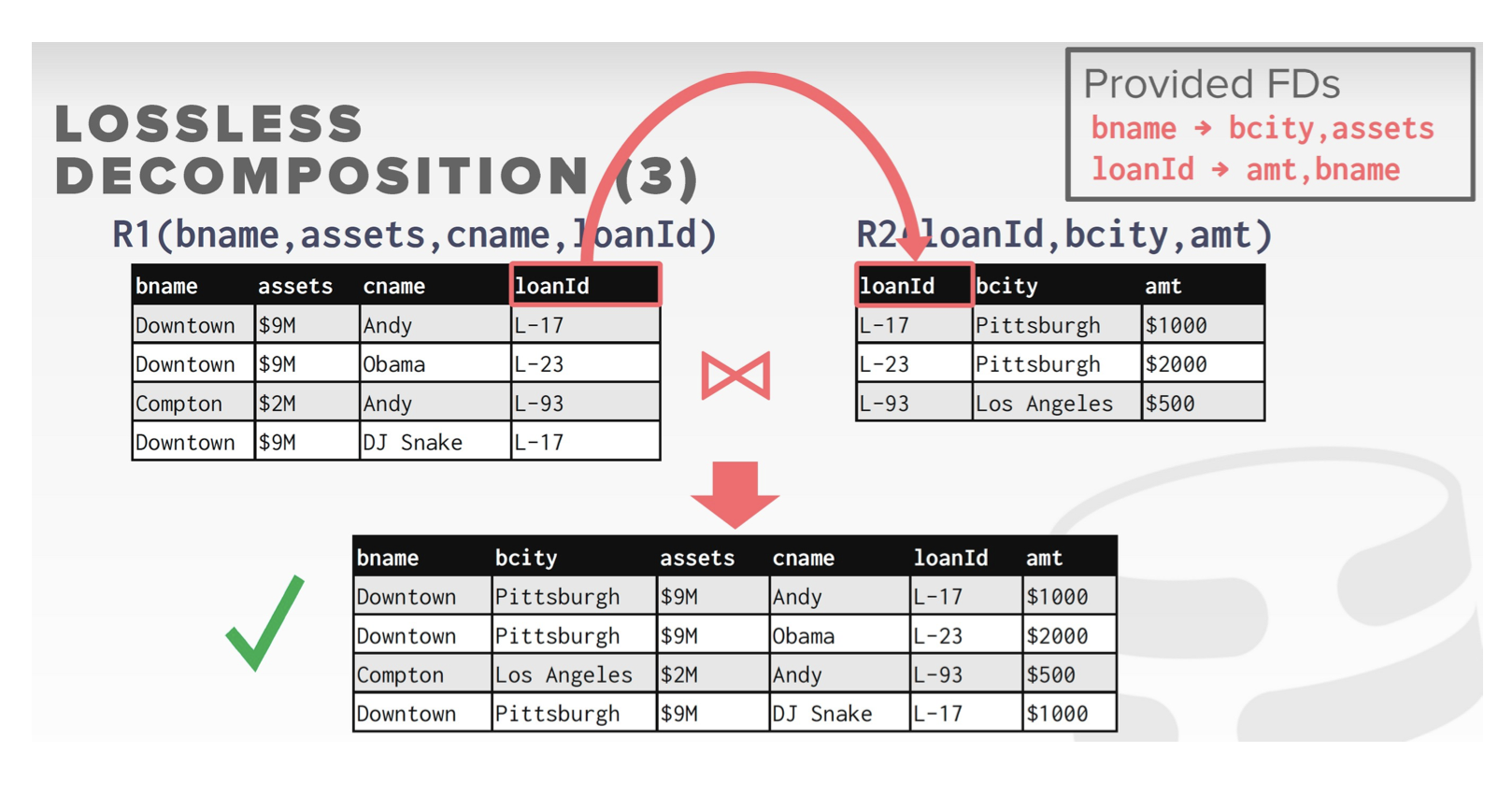
Decomposition:
Suppose we had started with inst_dept. How would we know to split up (decompose) it into instructor and department?
All attributes of an original schema (R) must appear in the decomposition (R1, R2)
Lossless-join decomposition.
For all possible relations r on Schema R


Not all decompositions are good. Suppose we decompose employee(ID, name, street, city, salary) into
employee1 (ID, name)
employee2 (name, street, city, salary)
The next slide shows how we lose information -- we cannot reconstruct the original employee relation -- and so, this is a lossy decomposition.
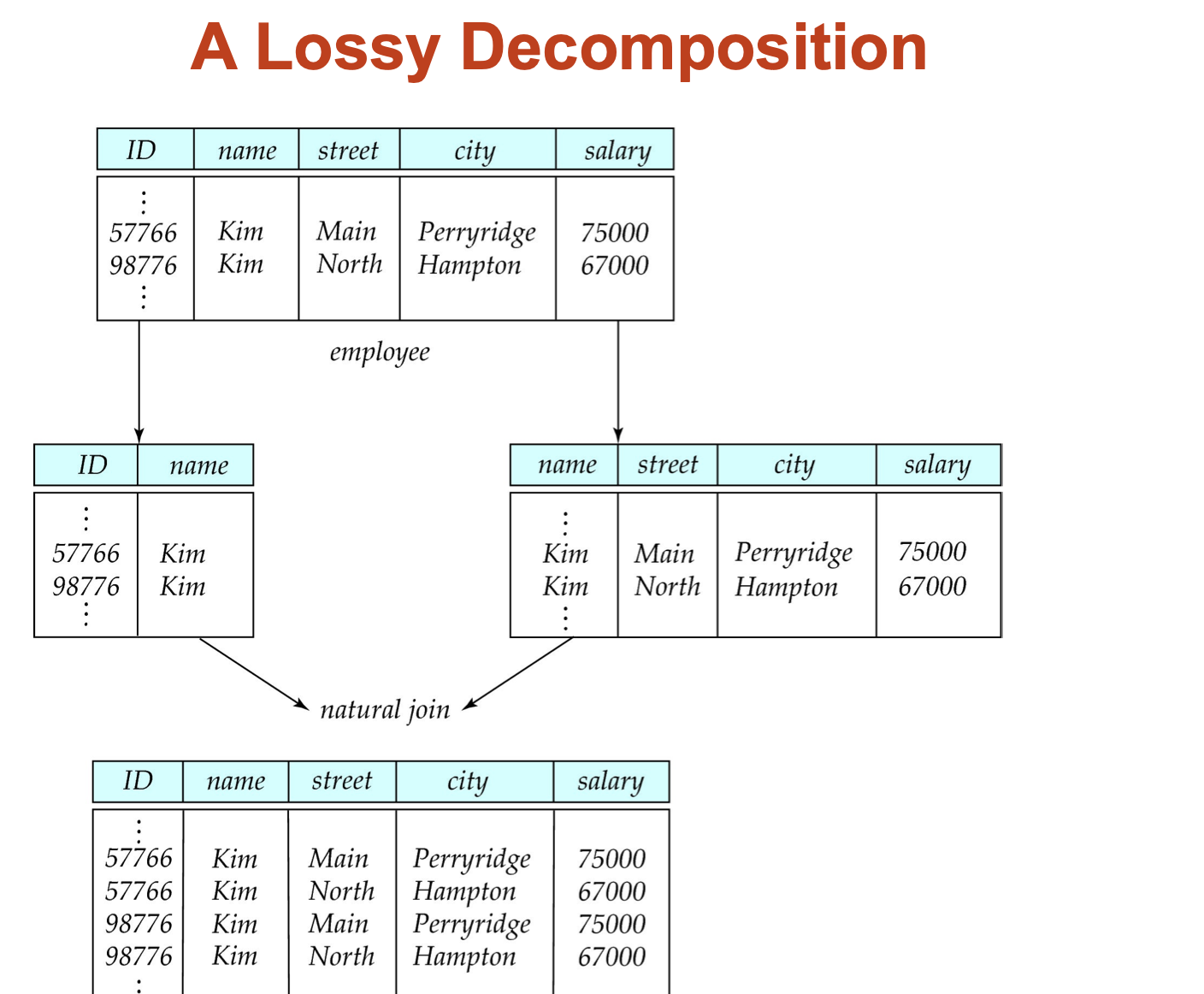
Boyce-Codd Normal Form:
A relation schema R is in BCNF with respect to a set F of functional dependencies if for all functional dependencies in F+ of the form
α->β
where α\in R and β \in R, at least one of the following holds
α->β is trivial, (i.e. β \in α )
α is a superkey for R
Example schema not in BCNF:
instr_dept (ID, name, salary, dept_name, building, budget )
because dept_name -> building, budget
holds on instr_dept, but dept_name is not a superkey
Decomposing a Schema into BCNF:
Suppose we have a schema R and a non-trivial dependency α->β causes a violation of BCNF.
We decompose R into:
(α \union β)
(R-(β - α))
In our example,
α = dept_name
β = building, budget
and inst_dept is replaced by
(α \union β) = ( dept_name, building, budget )
( R - (α-β) ) = ( ID, name, salary, dept_name )
Overall Database Design Process:
We have assumed schema R is given
R could have been generated when converting E-R diagram to a set of tables.
R could have been a single relation containing all attributes that are of interest (called universal relation).
Normalization breaks R into smaller relations.
R could have been the result of some ad hoc design of relations,
which we then test/convert to normal form.






 浙公网安备 33010602011771号
浙公网安备 33010602011771号